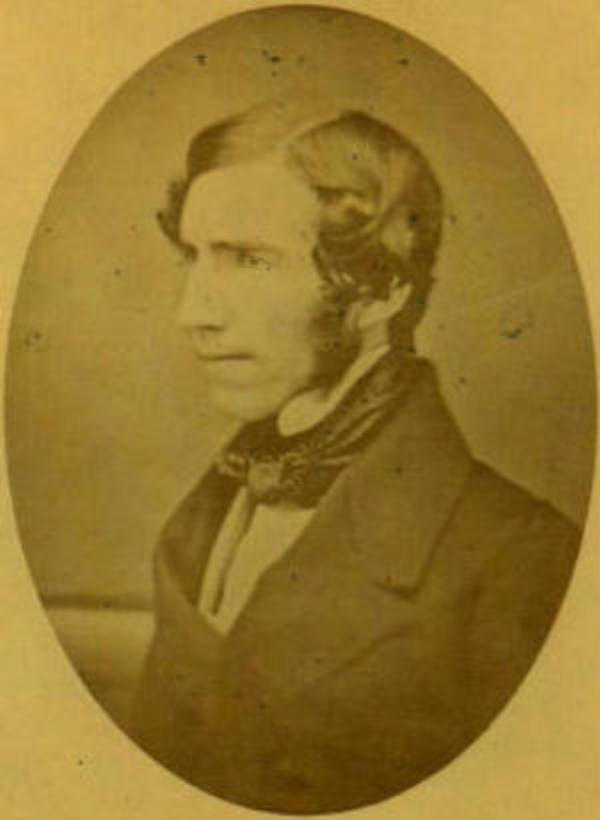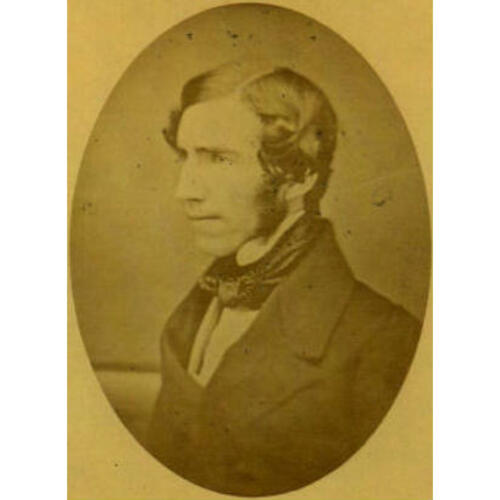
Source: Link
VONDY, JOHN, doctor; b. c. 1820 in Miramichi, N.B., son of Thomas Vondy and Janet —; d. 29 June 1847 on Middle Island, N.B.
John Vondy’s father came to Miramichi in 1816 from the Isle of Man and operated a store in Chatham for many years. John was educated in Chatham and then went to England to complete his medical studies. On his return he apparently practised medicine in Woodstock for three or four years before setting up in Chatham, where he opened an office in a local hotel in April 1847
At that time New Brunswick was experiencing the greatest influx of immigrants it had known since the 1830s. In 1847 thousands of refugees from the famine in Ireland were disgorged from foul-smelling, poorly equipped vessels at ports throughout the eastern United States and British North America; many of them carried diseases such as typhus. In New Brunswick, the majority of the immigrants arrived at Saint John and were quarantined at Partridge Island in hospital sheds and military tents. However, some ships turned up at Miramichi, where no adequate quarantine facilities existed. One of these was the barque Looshtauk, which arrived in the river on 2 June.
The Looshtauk had sailed from Liverpool, England, with 467 passengers; 117 had died of typhus on the passage and 100 others were ill when the ship reached Chatham on 4 June. The authorities were alarmed and unsure what to do with the sick. It was finally decided that temporary buildings would be erected on Middle Island, about two miles from Chatham, and, three days after their arrival, the immigrants were landed there. During the period of confusion another 40 had died. The port medical officers had done nothing to help the sick and they now refused to go to the island. The authorities had to find a doctor and Vondy volunteered his services.
Vondy went at once to the island and quickly discovered that its facilities were completely inadequate, with no shelter for many patients and no way of separating the sick from those free of disease. His own shelter was later described as “a piece of canvass and a buffalo skin.” Requests to the local authorities for blankets, supplies, and additional buildings were generally ignored. Fresh food, when it was provided, could not be properly stored and the dysentery it caused killed some of those apparently recovering from the fever. With the arrival of two other ships, Vondy soon had over 300 patients. Because of the fear of the disease, however, it was difficult to find people to assist him and he had to make do with one man and a boy. He faced an almost impossible task and every day there were more deaths; 96 of the Looshtauk passengers died on the island.
Vondy was not permitted to leave the island for fear he would carry the infection with him. He worked long hours without adequate food or rest and eventually contracted the disease. Attempts were then made to get another doctor to go to the island. One refused to have anything to do with the immigrants. Finally Dr John Thomson* agreed to visit the island daily, but he would not stay there. Without proper care Vondy’s condition worsened. His sister persuaded some friends to take her to the island, where she nursed her brother until he died on 29 June, at the age of 26. Three days later Dr James Patrick Collins, a volunteer assistant among the fever patients at Partridge Island, succumbed to the disease at an even younger age. Vondy’s sister was placed in quarantine and was forced to remain 21 days on Middle Island amongst the sick and the dying. Her friends tried to rescue her but were caught by the armed guards who had been hired to patrol the island and prevent immigrants reaching the mainland.
All victims of the fever were buried on the island, but the authorities agreed to allow Vondy’s body to be interred in St Paul’s churchyard at Bushville. His remains were enclosed in a double, air-tight coffin and were brought to the town wharf in a boat, while all the ships in the harbour lowered their flags. Shortly after his death a fund was started for a memorial stone and a plaque. Like Dr Collins of Saint John, Vondy gave his life trying to help suffering immigrants at a time when many other doctors refused to tend them.
PANB, MC 216/11; RG 18, RS153, G3/5, 11 March, 3 July 1847, and n.d. G.B., Parl., Command paper, 1847, 47, [no.50]: 57, 138–39, Papers relative to emigration to the British provinces in North America, and to the Australian colonies; part I: British provinces in North America. Gleaner (Miramichi [Chatham, N.B.]), 6 April, 8 June–27 July, 24 Aug. 1847. Esther Clark Wright, The Miramichi: a study of the New Brunswick river and of the people who settled along it (Sackville, N.B., 1944), 52–54. J. A. Fraser, By favourable winds: a history of Chatham, New Brunswick ([Chatham], 1975), 69–70, 304. J. McG. Baxter, “Ship fever in 1847,” Miramichi Natural Hist. Assoc., Proc. (Chatham), no.6 (1911): 7–15.
Cite This Article
W. A. Spray, “VONDY, JOHN,” in Dictionary of Canadian Biography, vol. 7, University of Toronto/Université Laval, 2003–, accessed December 31, 2025, https://www.biographi.ca/en/bio/vondy_john_7E.html.
The citation above shows the format for footnotes and endnotes according to the Chicago manual of style (16th edition). Information to be used in other citation formats:
| Permalink: | https://www.biographi.ca/en/bio/vondy_john_7E.html |
| Author of Article: | W. A. Spray |
| Title of Article: | VONDY, JOHN |
| Publication Name: | Dictionary of Canadian Biography, vol. 7 |
| Publisher: | University of Toronto/Université Laval |
| Year of publication: | 1988 |
| Year of revision: | 1988 |
| Access Date: | December 31, 2025 |



